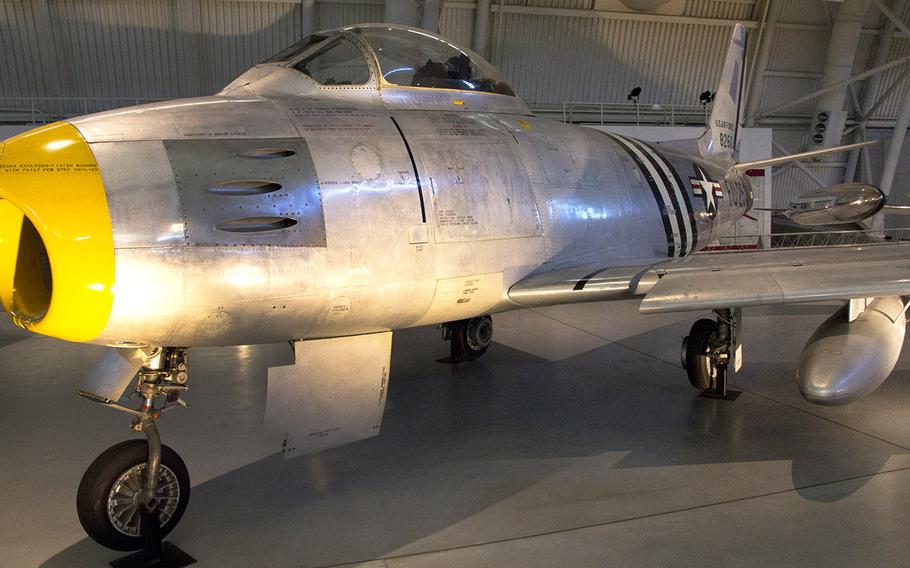
A North American F-86A Sabre jet at the National Air and Space Museum's Steven F. Udvar-Hazy Center, November, 2013. "America's first swept-wing jet fighter, the F-86 Sabre joined the ranks of great fighter aircraft during combat operations high above the Yalu River in Korea," according to the Smithsonian's description. (Joe Gromelski/Stars and Stripes)

A North American F-86A Sabre jet at the National Air and Space Museum's Steven F. Udvar-Hazy Center, November, 2013. "America's first swept-wing jet fighter, the F-86 Sabre joined the ranks of great fighter aircraft during combat operations high above the Yalu River in Korea," according to the Smithsonian's description. (Joe Gromelski/Stars and Stripes)
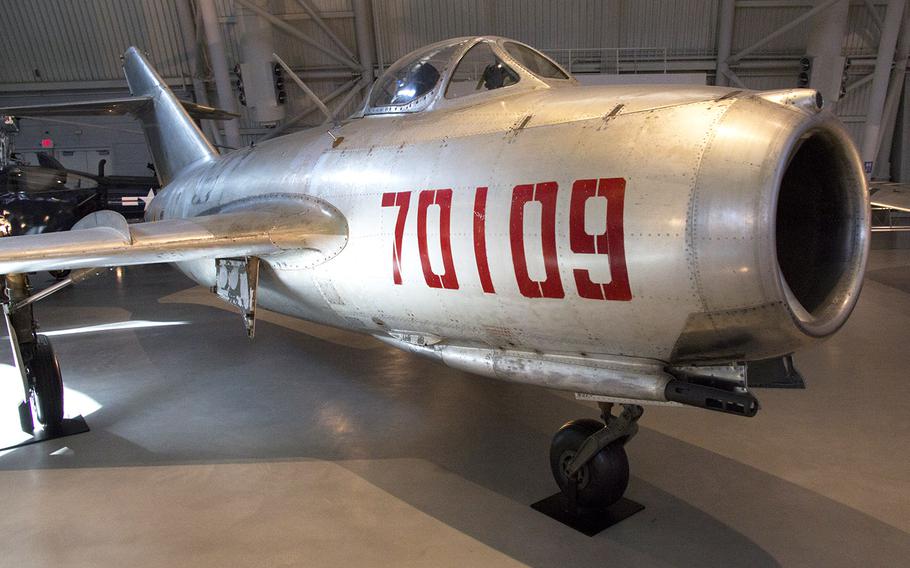
A Mikoyan-Gurevich MiG-15 (Ji-2) FAGOT B jet at the National Air and Space Museum's Steven F. Udvar-Hazy Center, November, 2013. The MiG-15 was considered the arch-rival to the American F-86 during the Korean War. (Joe Gromelski/Stars and Stripes)
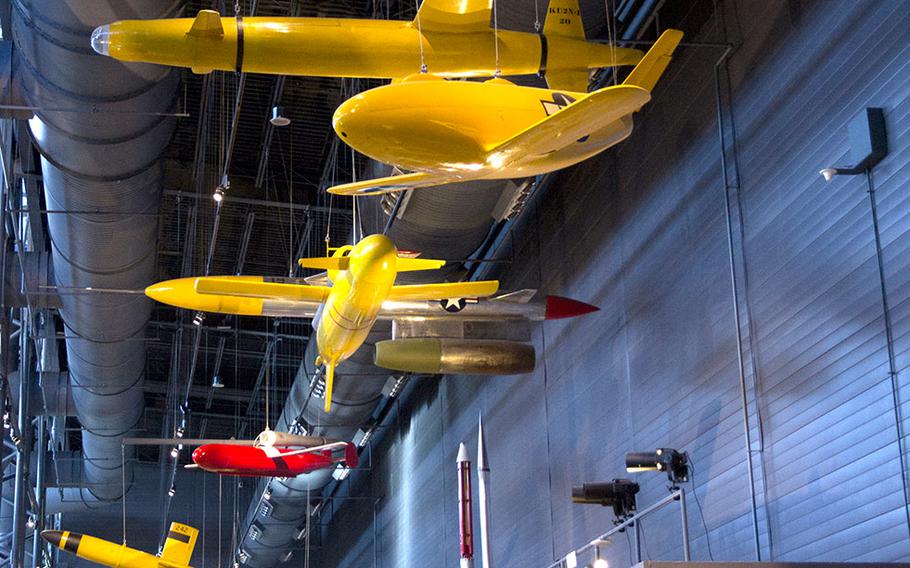
Drones and missiles on display at the National Air and Space Museum's Steven F. Udvar-Hazy Center, November, 2013. (Joe Gromelski/Stars and Stripes)
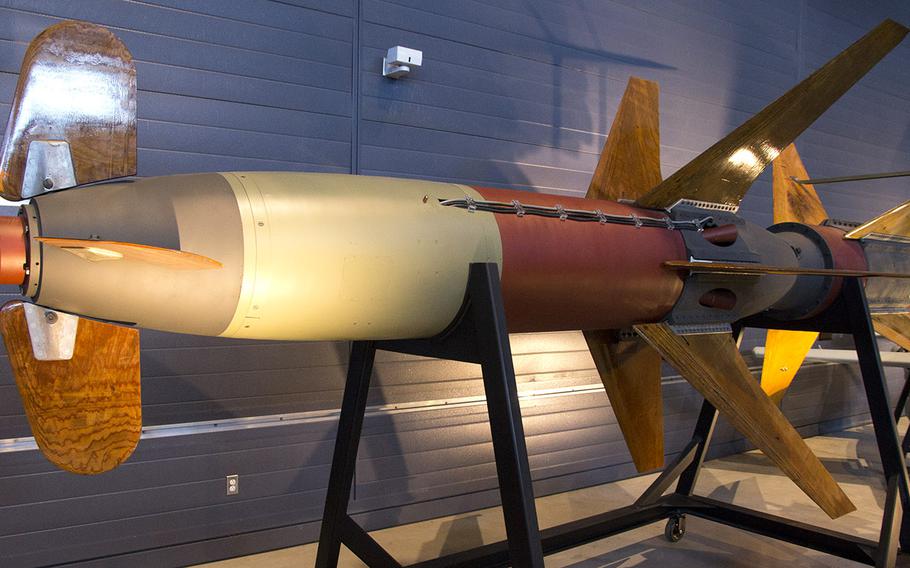
A German World War II Rheintochter R-I experimental two-stage antiaircraft missile at the National Air and Space Museum's Steven F. Udvar-Hazy Center, November, 2013. (Joe Gromelski/Stars and Stripes)
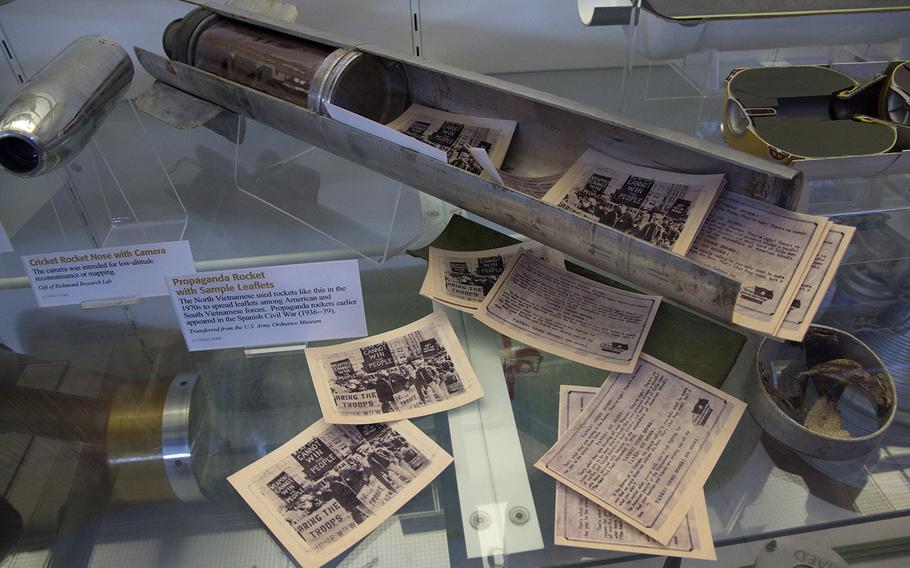
A North Vietnamese propaganda rocket and leaflets, at the National Air and Space Museum's Steven F. Udvar-Hazy Center, November, 2013. The leaflets, showing antiwar protests in the U.S., were sent toward American and Vietnamese troops. (Joe Gromelski/Stars and Stripes)
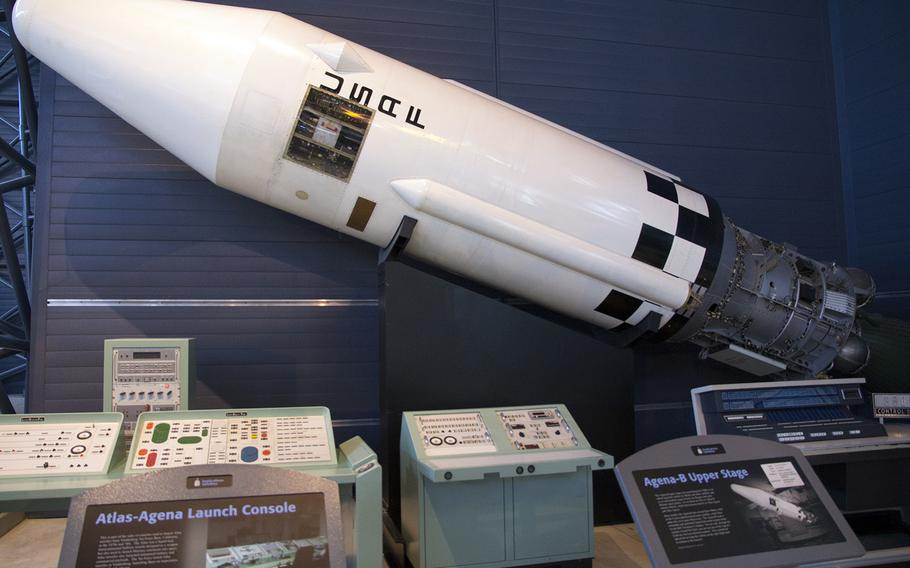
An Agena-B upper stage from the 1960s, at the National Air and Space Museum's Steven F. Udvar-Hazy Center, November, 2013. (Joe Gromelski/Stars and Stripes)
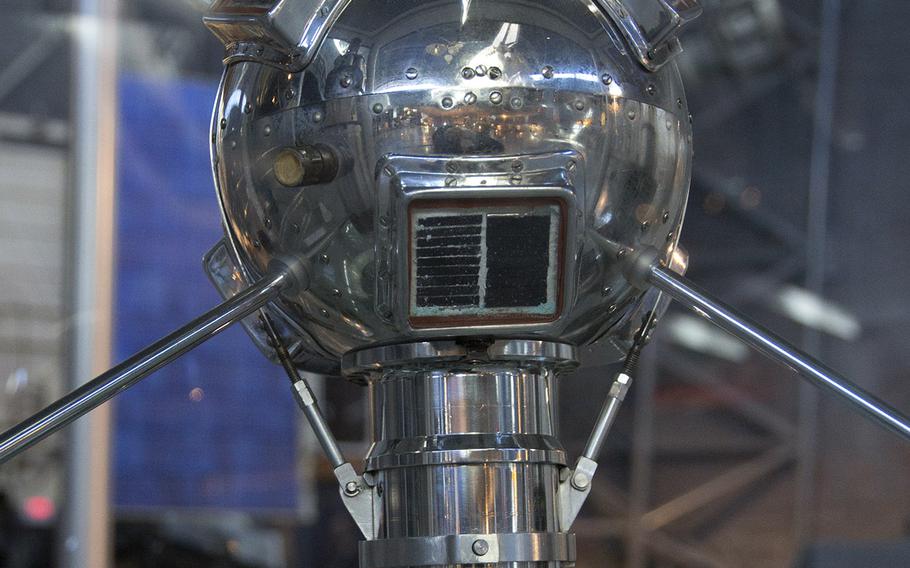
A Vanguard satellite at the National Air and Space Museum's Steven F. Udvar-Hazy Center, November, 2013. The solar-powered Vanguard was America's second satellite placed in orbit, after Explorer. (Joe Gromelski/Stars and Stripes)
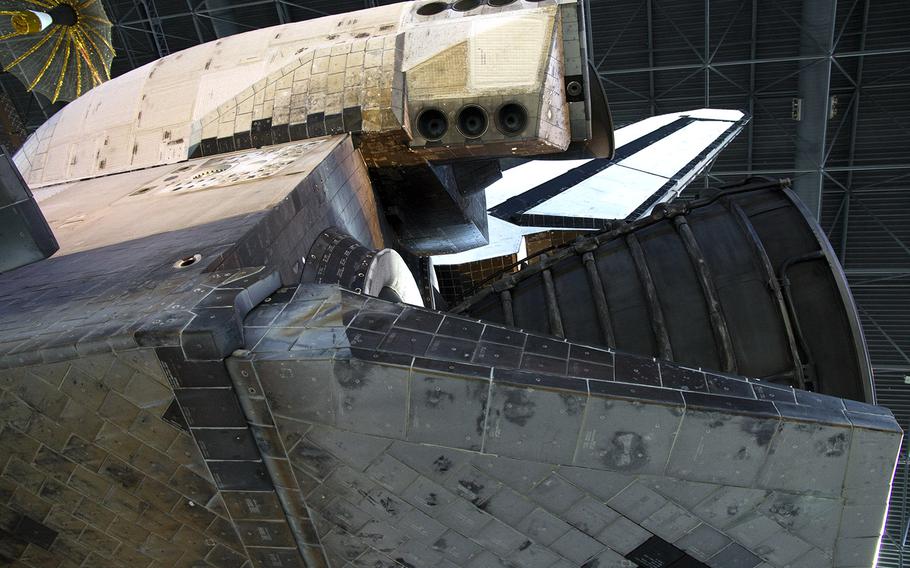
The rear section of the space shuttle Discovery, showing thermal tiles, at the National Air and Space Museum's Steven F. Udvar-Hazy Center, November, 2013. (Joe Gromelski/Stars and Stripes)
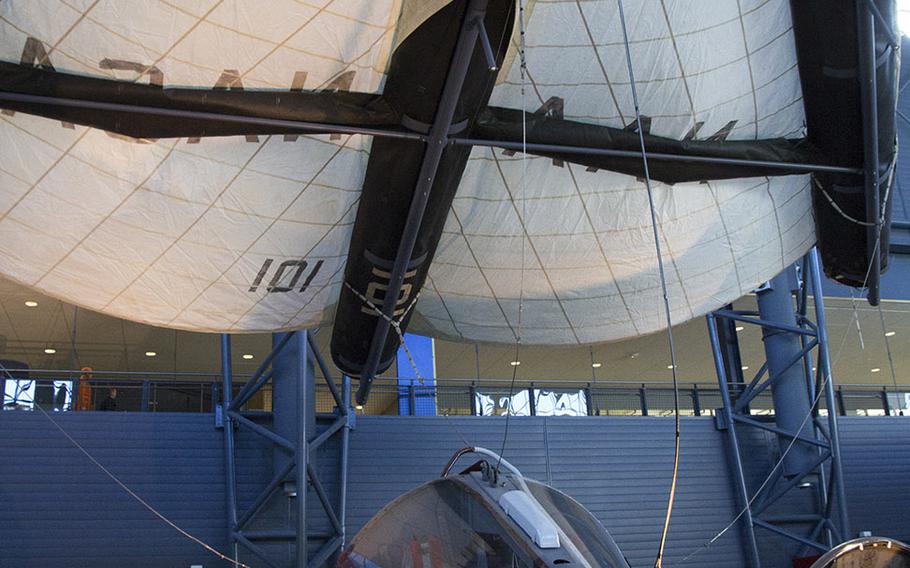
A prototype of a Gemini space capsule that would have returned to land, rather than splashing down at sea, at the National Air and Space Museum's Steven F. Udvar-Hazy Center, November, 2013. (Joe Gromelski/Stars and Stripes)
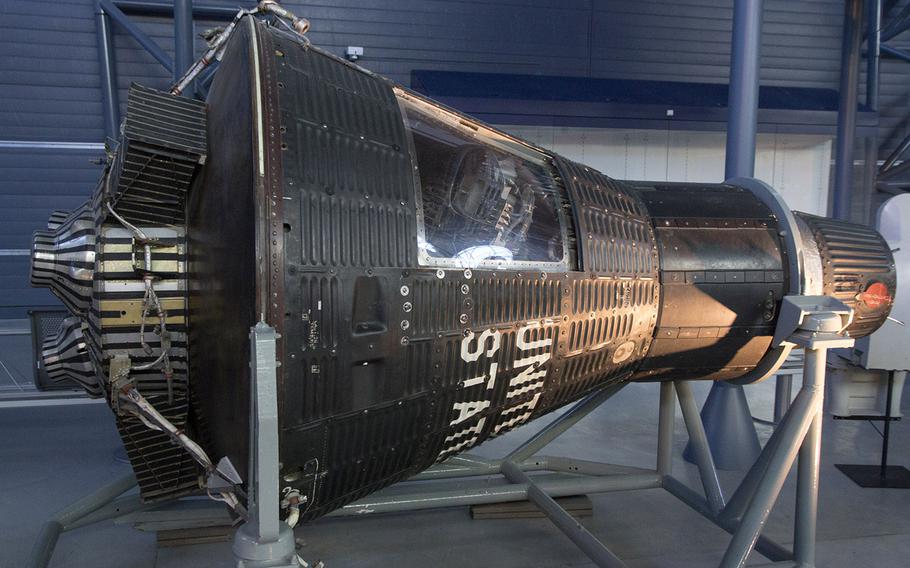
An unused Mercury space capsule, with its retro rockets intact, at the National Air and Space Museum's Steven F. Udvar-Hazy Center, November, 2013. (Joe Gromelski/Stars and Stripes)
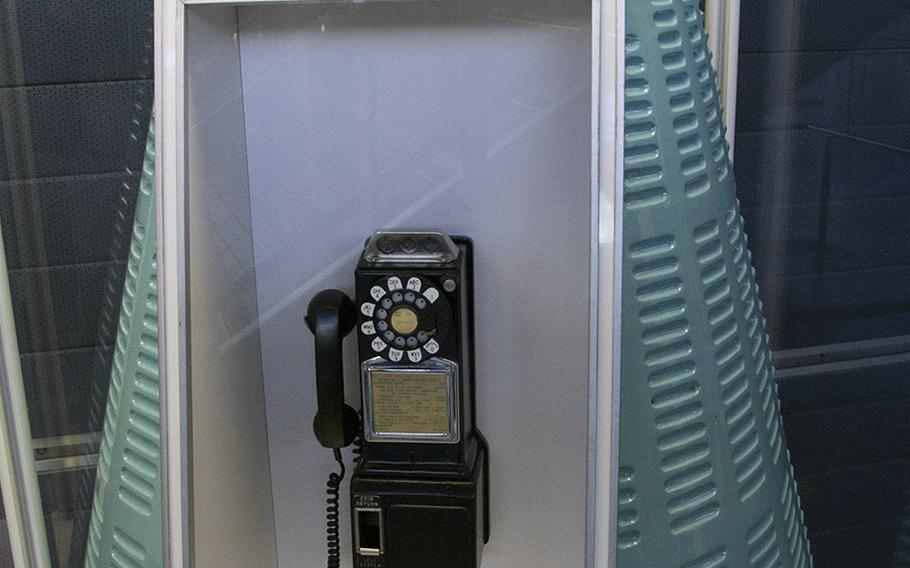
A 1960s space-themed public telephone, at the National Air and Space Museum's Steven F. Udvar-Hazy Center, November, 2013. (Joe Gromelski/Stars and Stripes)
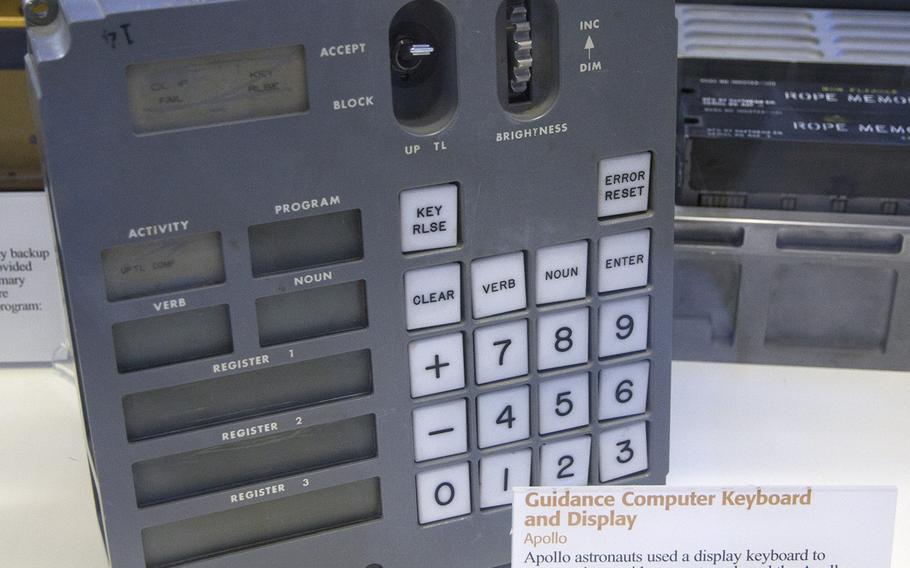
A keypad used by Apollop astronauts to communicate with the guidance computers, at the National Air and Space Museum's Steven F. Udvar-Hazy Center, November, 2013. (Joe Gromelski/Stars and Stripes)
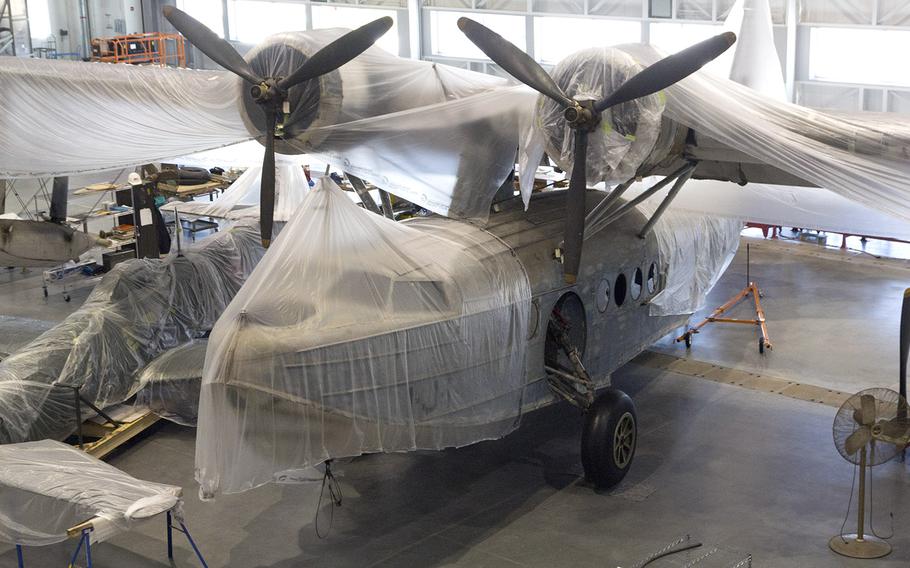
At the National Air and Space Museum's Steven F. Udvar-Hazy Center, a Sikorsky JRS-1 aircraft is covered during restoration work in November, 2013. The plane was sent out to search for the Japanese fleet after the attack on Pearl Harbor in December, 1941. (Joe Gromelski/Stars and Stripes)
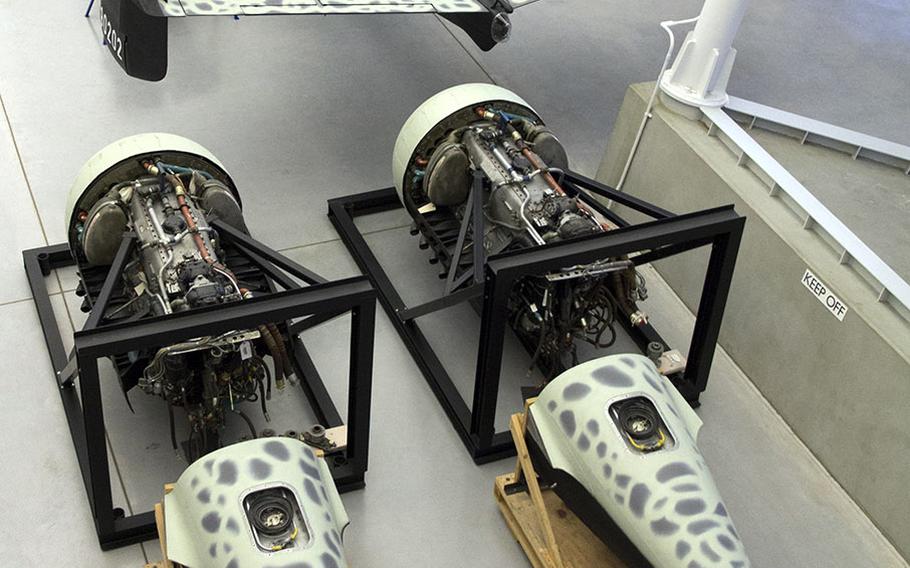
German World War II aircraft on display at the National Air and Space Museum's Steven F. Udvar-Hazy Center, November, 2013. (Joe Gromelski/Stars and Stripes)
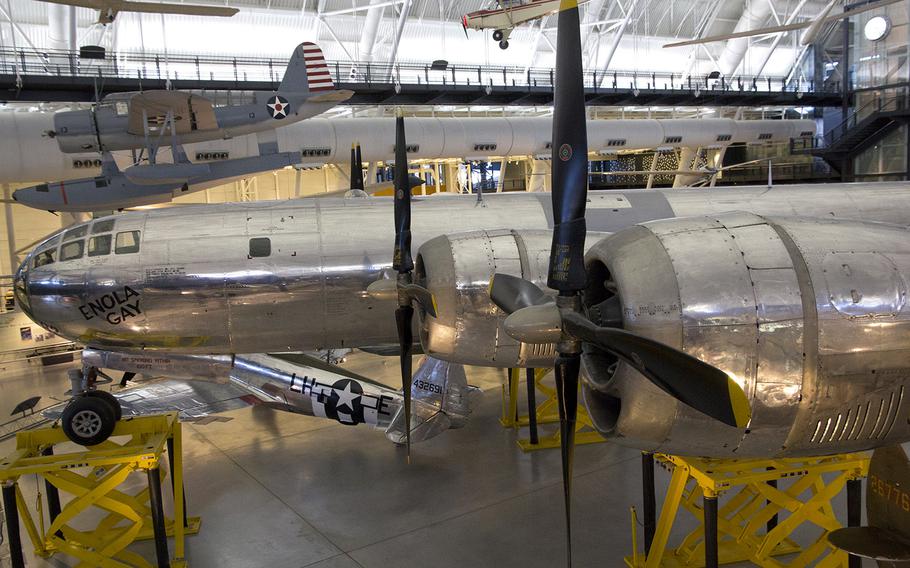
The "Enola Gay" at the National Air and Space Museum's Steven F. Udvar-Hazy Center, November, 2013. The B-29 Superfortress dropped the atomic bomb on Hiroshima, Japan. (Joe Gromelski/Stars and Stripes)
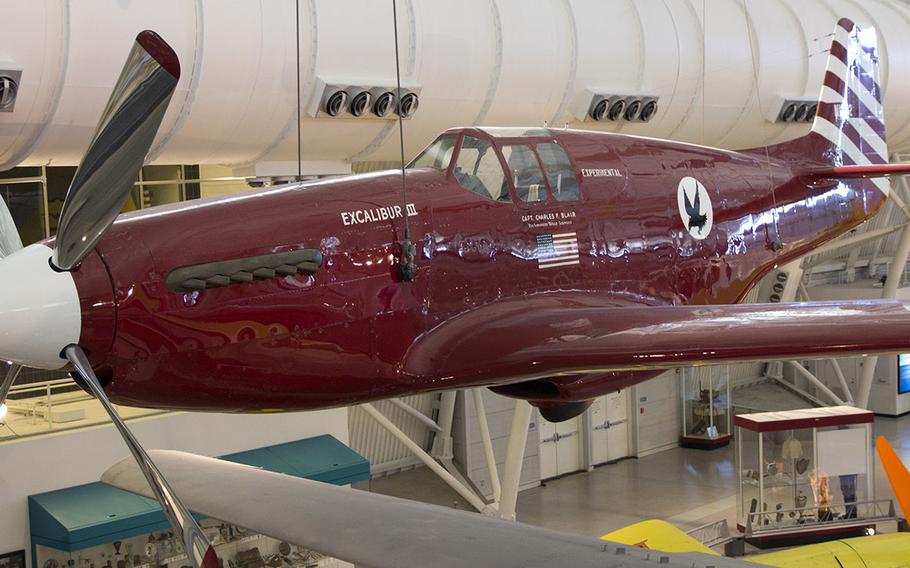
In 1951, Capt. Charles Blair flew this P-51C aircraft, now on display at the National Air and Space Museum's Steven F. Udvar-Hazy Center, from Norway across the North Pole to Alaska in a record 10½ hours. (Joe Gromelski/Stars and Stripes)
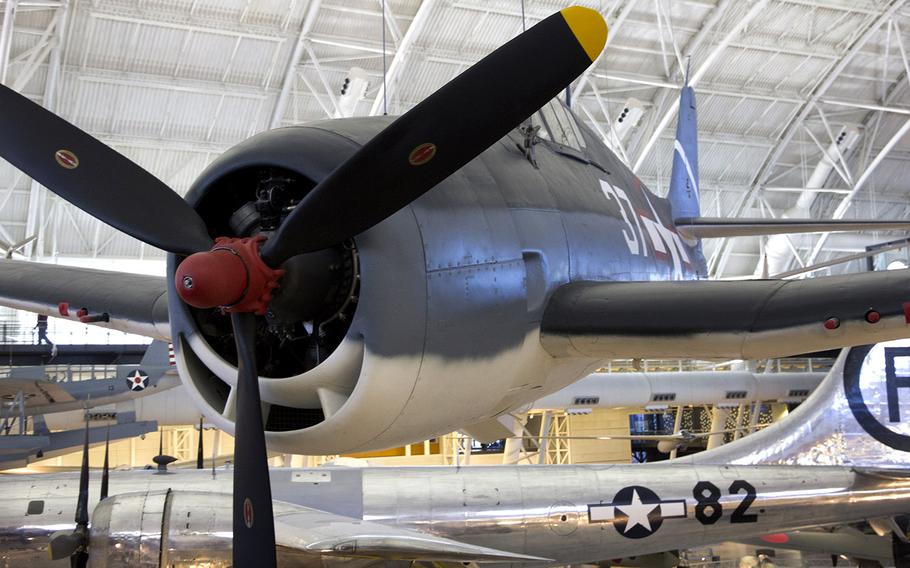
A Grumman F6F-3 Hellcat, at the National Air and Space Museum's Steven F. Udvar-Hazy Center, November, 2013. It was used to measure radiation levels after the first atomic bomb tests at Bikini Atoll in 1946. (Joe Gromelski/Stars and Stripes)
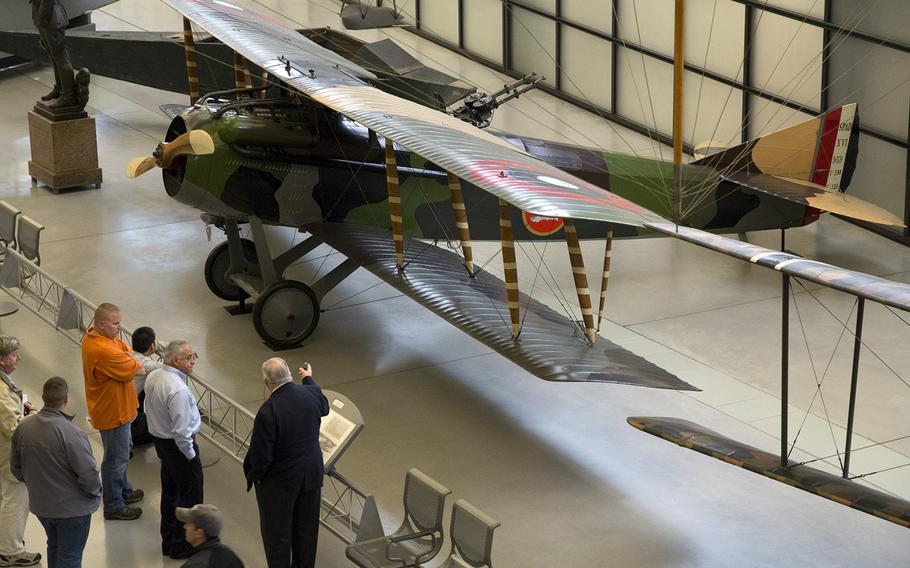
A Spad XVI that was flown by military aviation pioneer Brig. Gen. Billy Mitchell during World War I, on display at the National Air and Space Museum's Steven F. Udvar-Hazy Center, November, 2013. (Joe Gromelski/Stars and Stripes)
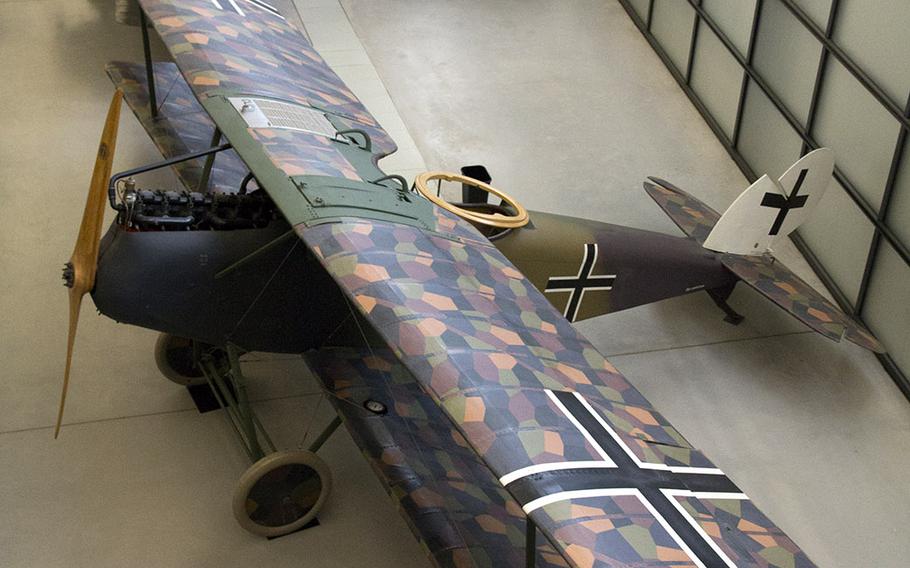
A Halberstadt CL.IV low-level attack plane, of the type used by the Germans in the late stages of World War I, on display at the National Air and Space Museum's Steven F. Udvar-Hazy Center, November, 2013. (Joe Gromelski/Stars and Stripes)
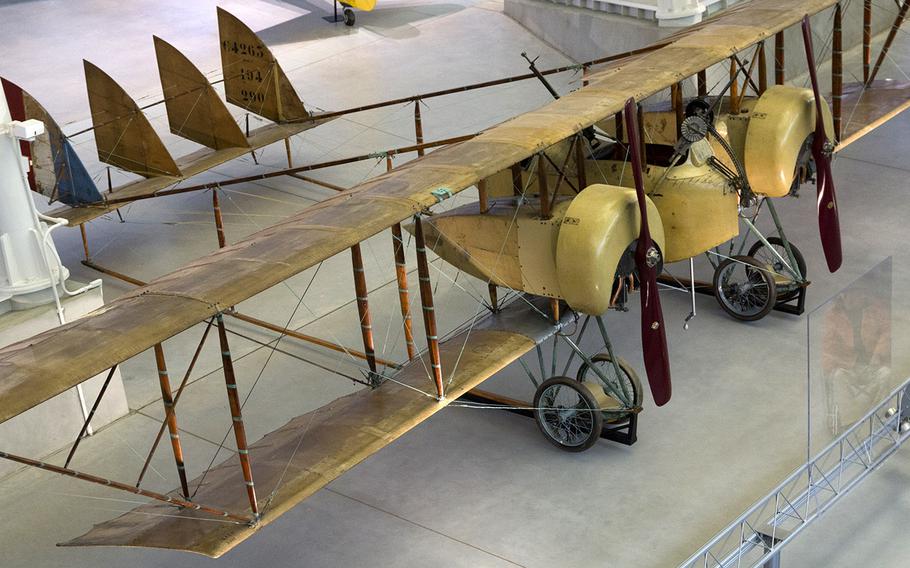
The French Caudron G.4, on display at the National Air and Space Museum's Steven F. Udvar-Hazy Center, November, 2013. It was an early light bomber and reconnaissance aircraft. (Joe Gromelski/Stars and Stripes)
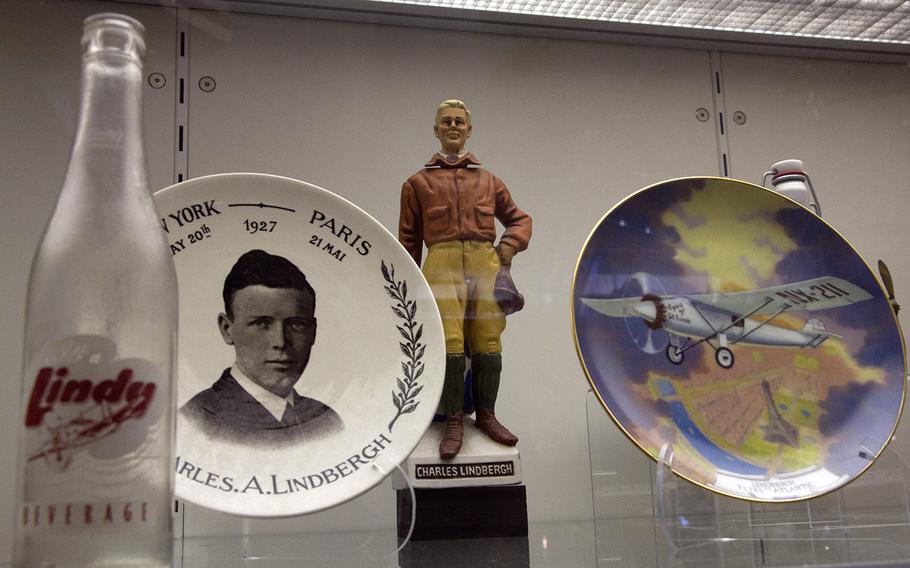
Some of the many souvenirs that flooded the American market after Charles Lindbergh's transatlantic flight, on display at the National Air and Space Museum's Steven F. Udvar-Hazy Center, November, 2013. (Joe Gromelski/Stars and Stripes)
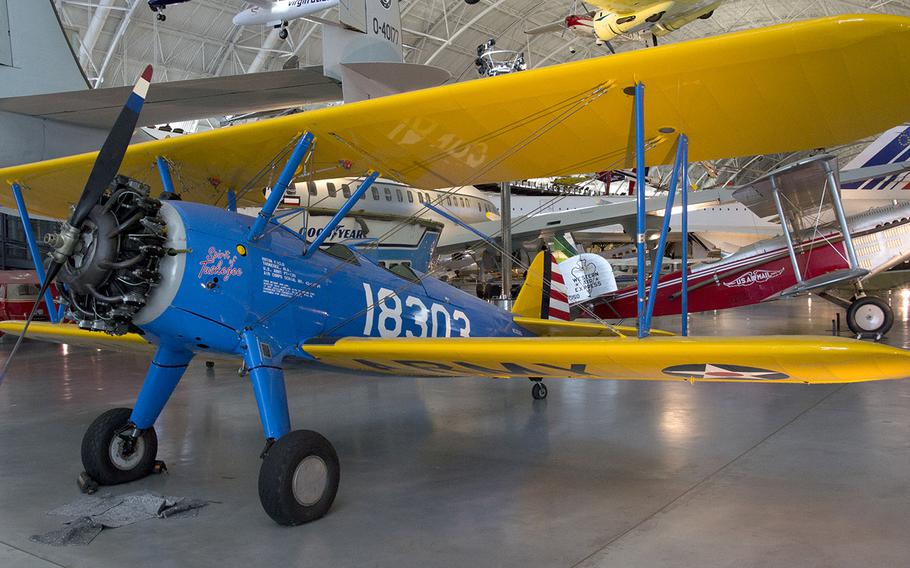
The Boeing-Stearma PT-13D Kaydet "Spirit of Tuskegee," at the National Air and Space Museum's Steven F. Udvar-Hazy Center, November, 2013. The plane was used to train the famed Tuskegee Airmen during World War II; it was used as a crop duster after the war, and restored in recent years by Air Force Capt. Matt Quy and his wife, Tina. (Joe Gromelski/Stars and Stripes)
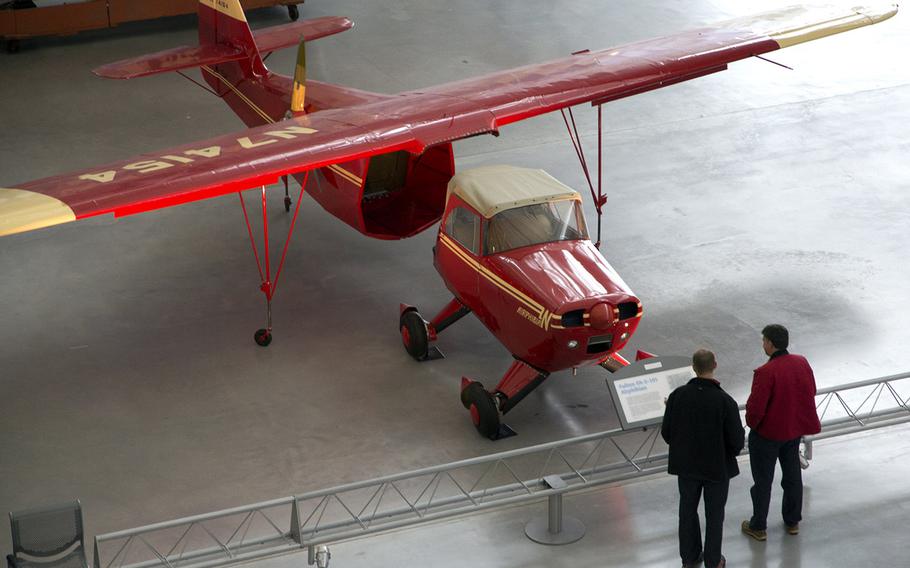
A Fulton Airphibian FA-3-101, from the early 1950s, at the National Air and Space Museum's Steven F. Udvar-Hazy Center, November, 2013. It could fly to an airport and then, after disengaging the rear section, be driven on a highway. (Joe Gromelski/Stars and Stripes)
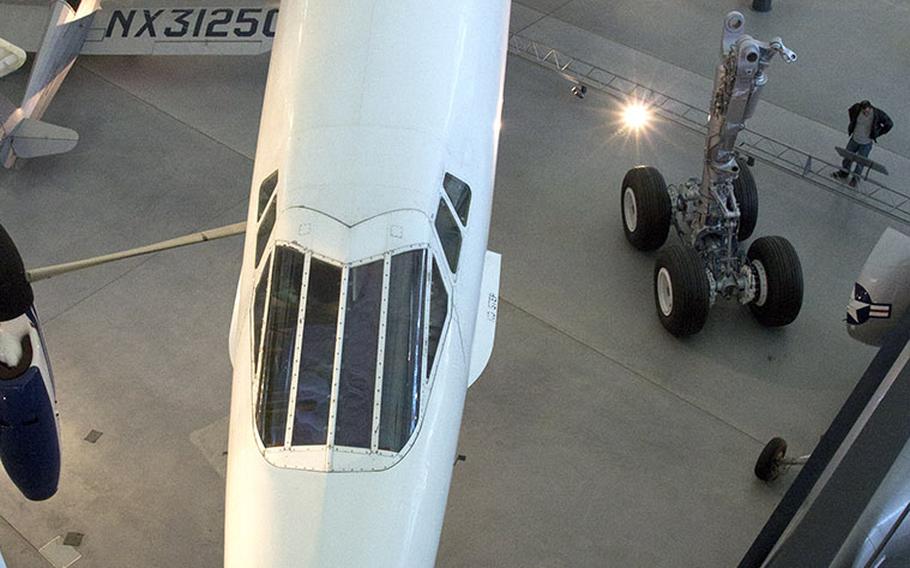
A French Concorde supersonic passenger aircraft. at the National Air and Space Museum's Steven F. Udvar-Hazy Center, November, 2013. (Joe Gromelski/Stars and Stripes)
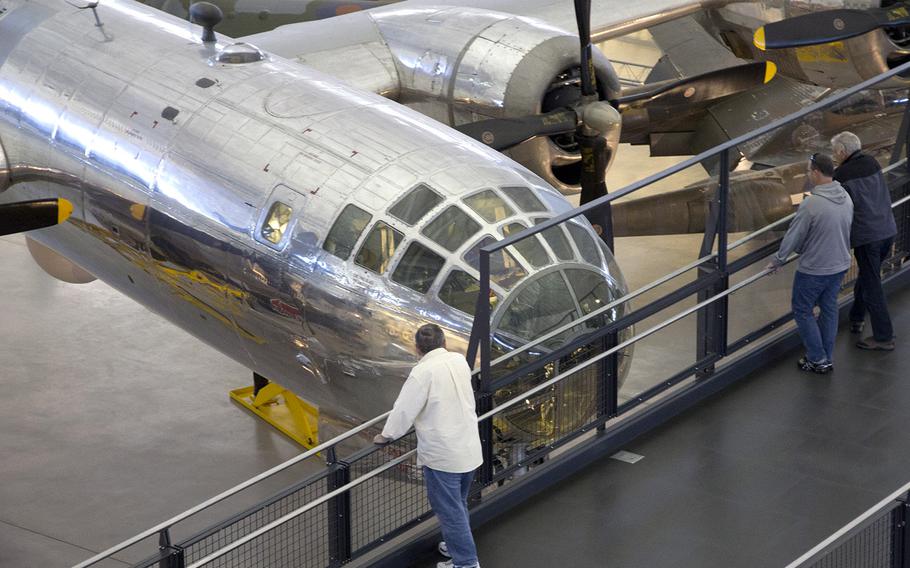
Visitors to the National Air and Space Museum's Steven F. Udvar-Hazy Center in November, 2013 peer into the cockpit of the B-29 Superfortress "Enola Gay." (Joe Gromelski/Stars and Stripes)
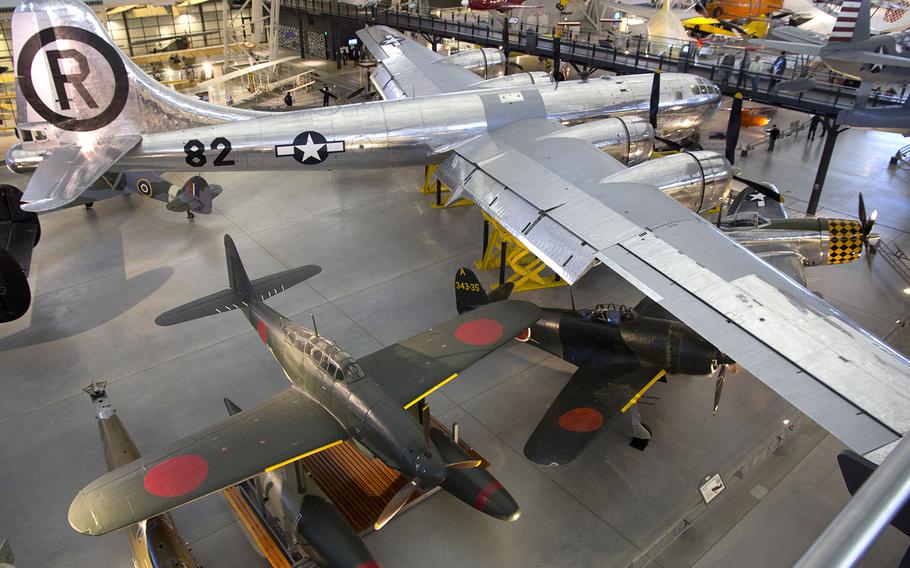
World War II Japanese aircraft on display beneath the giant wing of the B-29 Superfortress "Enola Gay," at the National Air and Space Museum's Steven F. Udvar-Hazy Center, November, 2013. The plane at hte bottom is the M6A1 Seiran (Storm from a Clear Sky) torpedo-bomber, which was designed to be launched from a submarine. (See story: http://www.stripes.com/news/researchers-unravel-the-mystery-of-japan-s-400-foot-aircraft-launching-submarine-1.258067) (Joe Gromelski/Stars and Stripes)
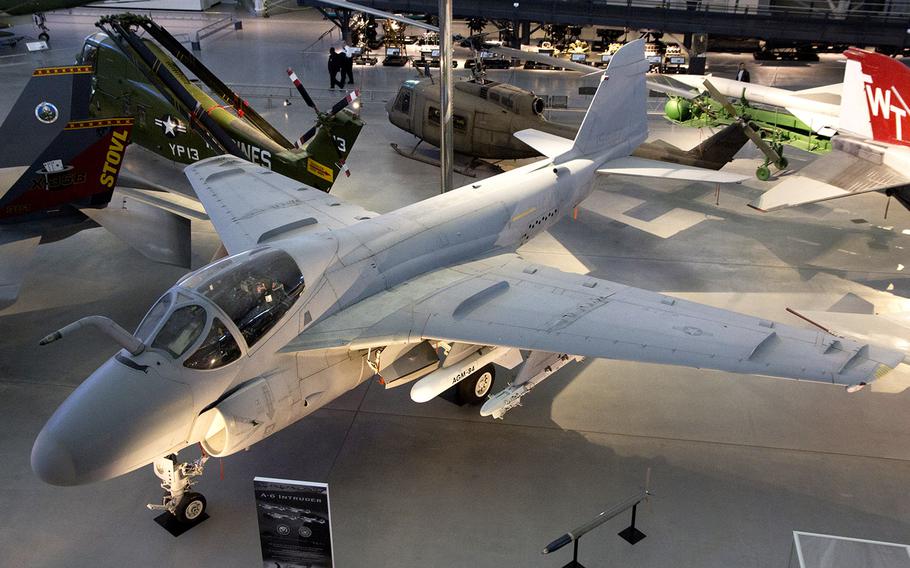
A Grumman A-6E Intruder, at the National Air and Space Museum's Steven F. Udvar-Hazy Center, November, 2013. This aircraft saw action in Vietnam and in the early stages of the Gulf War. (Joe Gromelski/Stars and Stripes)
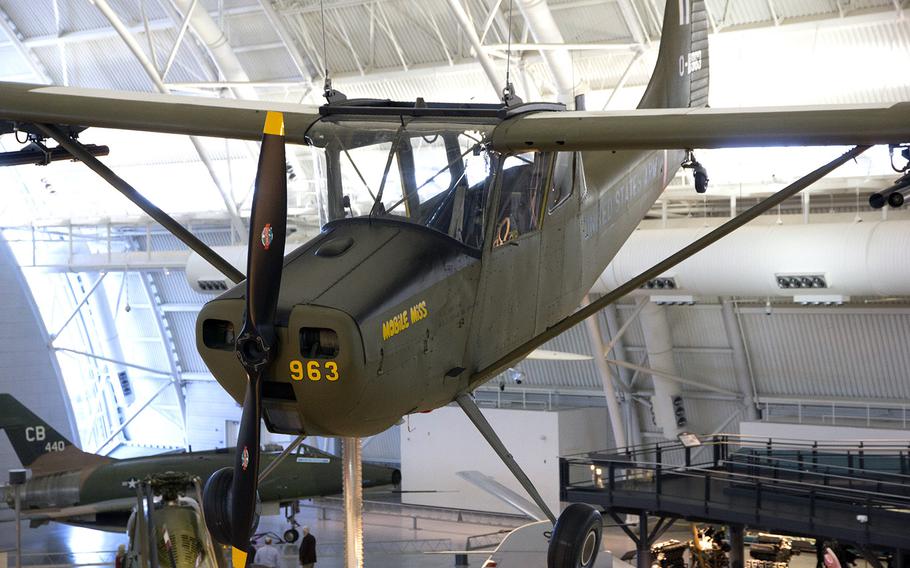
A Cessna O-1A Bird Dog, at the National Air and Space Museum's Steven F. Udvar-Hazy Center, November, 2013. These planes were used in both the Korean and Vietnam wars for purposes ranging from laying communication wire to marking targets with phosphorus rockets. (Joe Gromelski/Stars and Stripes)
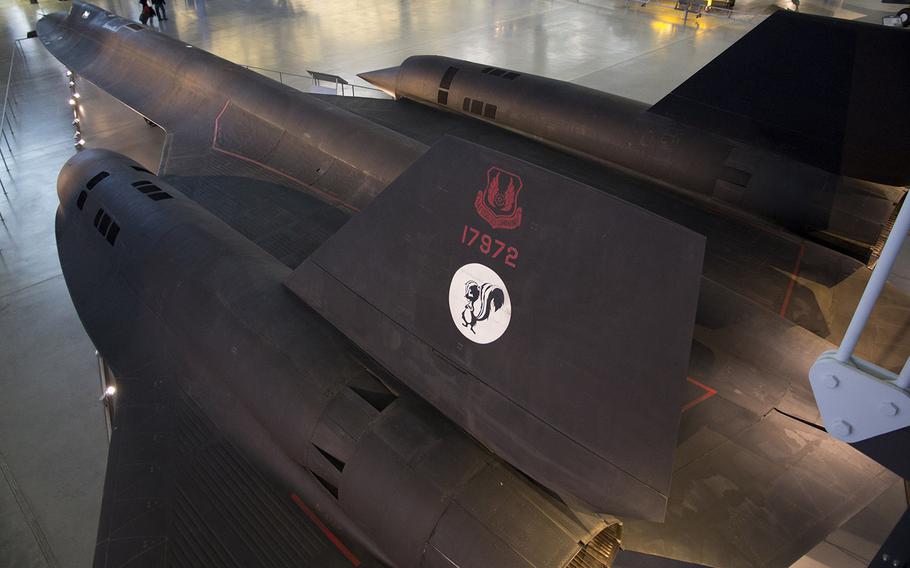
The SR-71A Blackbird, the world's fastest jet-propelled aircraft, at the National Air and Space Museum's Steven F. Udvar-Hazy Center, November, 2013. This plane flew from Los Angeles to Washington, D.C. in one hour, four minutes and 20 seconds on its last flight in 1990, averaging 2,124 miles per hour. (Joe Gromelski/Stars and Stripes)
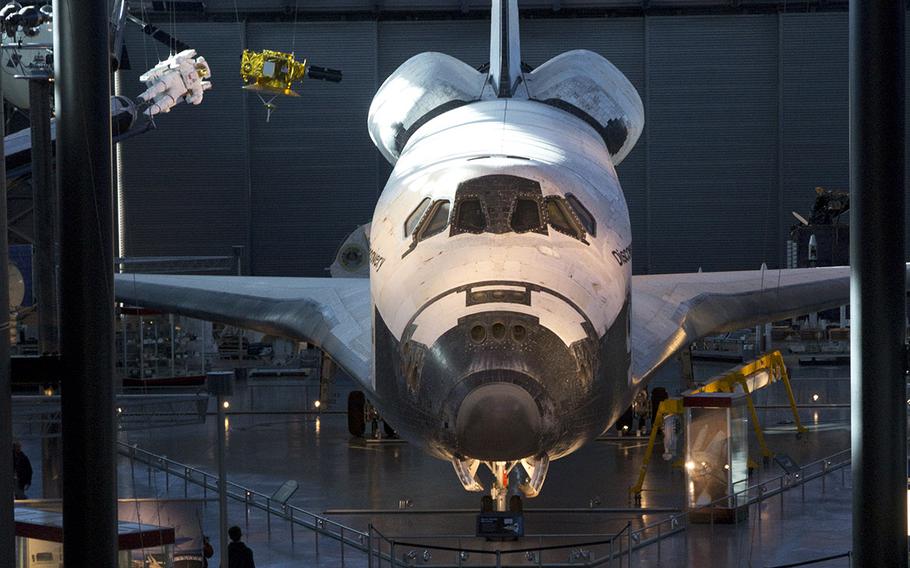
The space shuttle Discovery at the National Air and Space Museum's Steven F. Udvar-Hazy Center, November, 2013. (Joe Gromelski/Stars and Stripes)

The SR-71A Blackbird, the world's fastest jet-propelled aircraft, at the National Air and Space Museum's Steven F. Udvar-Hazy Center, November, 2013. This plane flew from Los Angeles to Washington, D.C. in one hour, four minutes and 20 seconds on its last flight in 1990, averaging 2,124 miles per hour. (Joe Gromelski/Stars and Stripes)
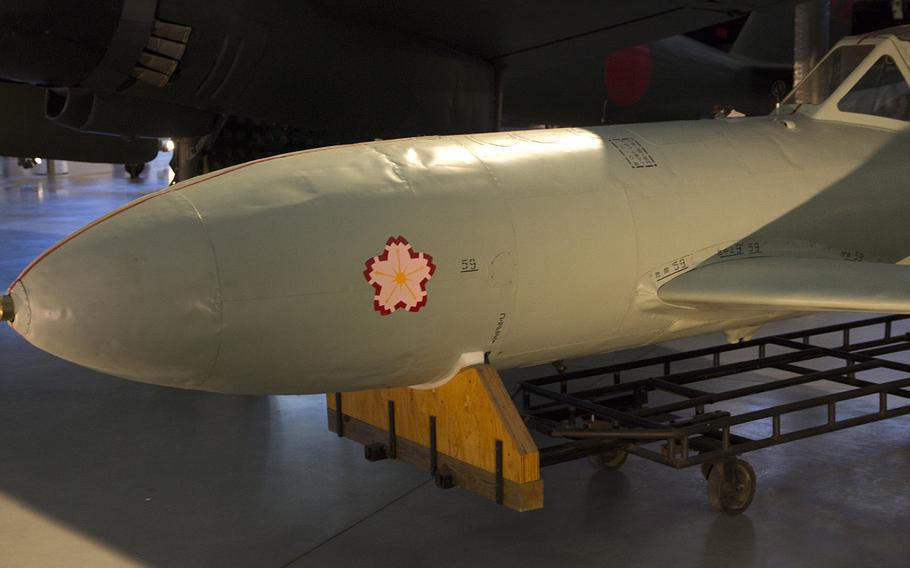
The Kugisho MXY7 Ohka (Cherry Blossom) 22 kamikaze plane, on display at the National Air and Space Museum's Steven F. Udvar-Hazy Center, November, 2013. (Joe Gromelski/Stars and Stripes)
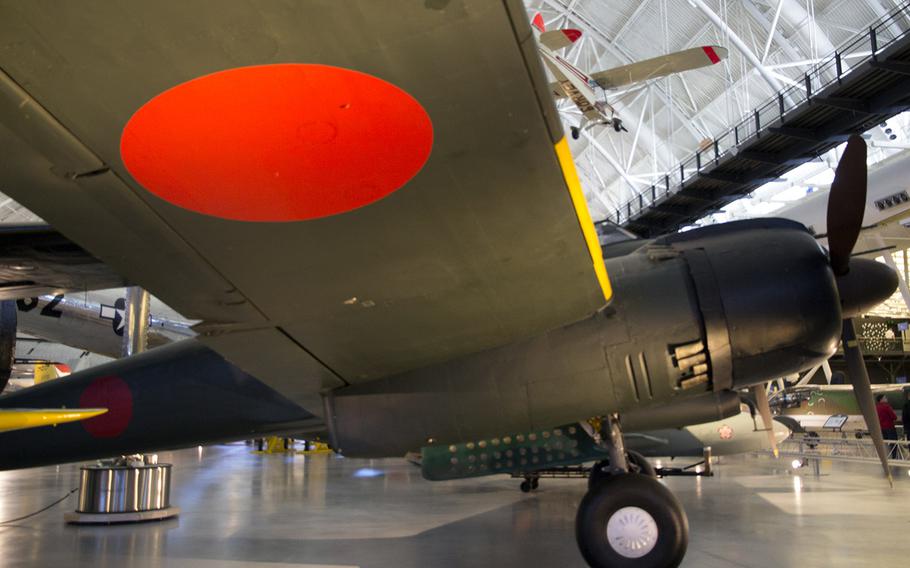
A Japanese World War II Nakajima J1N1-S Gekko "Irving," at the National Air and Space Museum's Steven F. Udvar-Hazy Center, November, 2013. (Joe Gromelski/Stars and Stripes)
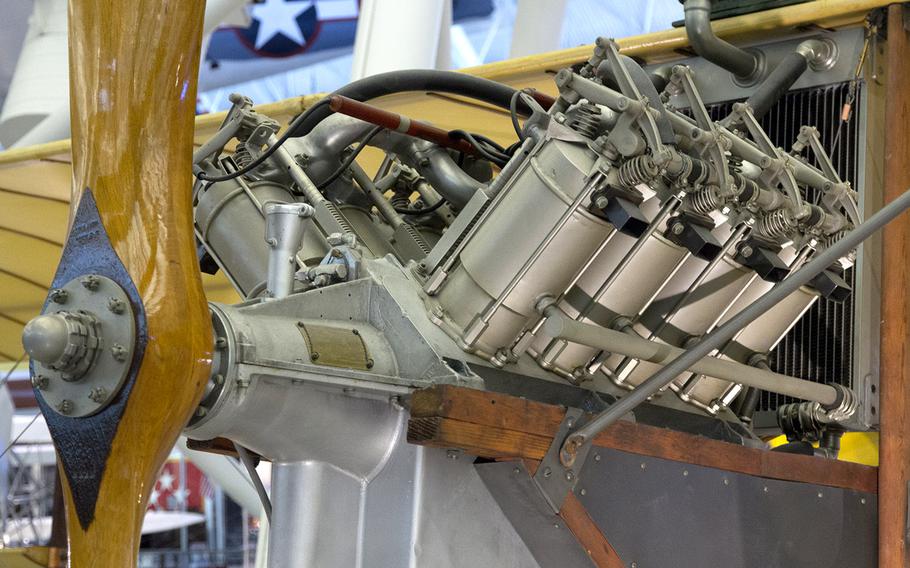
A close-up look at the engine of a World War I Fowler-Gage biplane at the National Air and Space Museum's Steven F. Udvar-Hazy Center, November, 2013. (Joe Gromelski/Stars and Stripes)
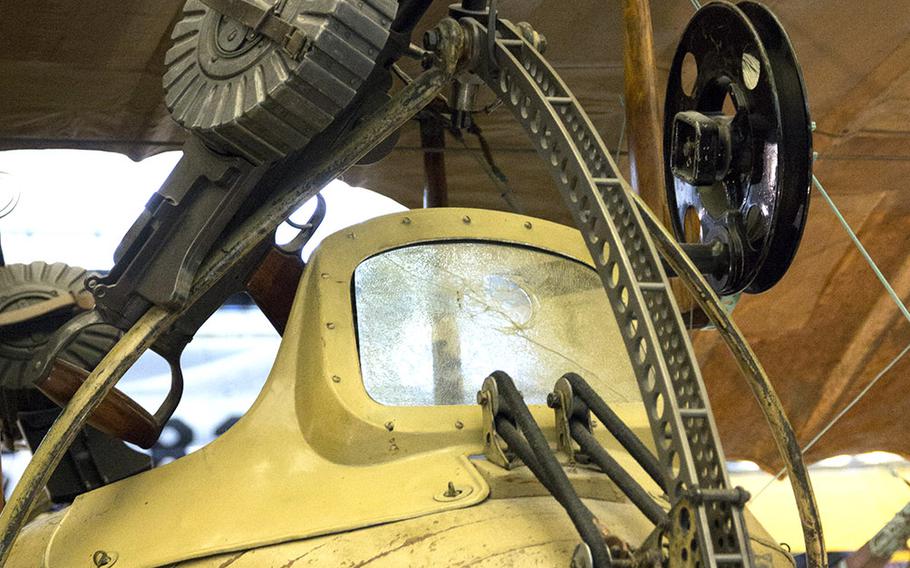
A look at the machine gun on the French Caudron G.4, on display at the National Air and Space Museum's Steven F. Udvar-Hazy Center, November, 2013. The Caudron G.4 was an early light bomber and reconnaissance aircraft. (Joe Gromelski/Stars and Stripes)
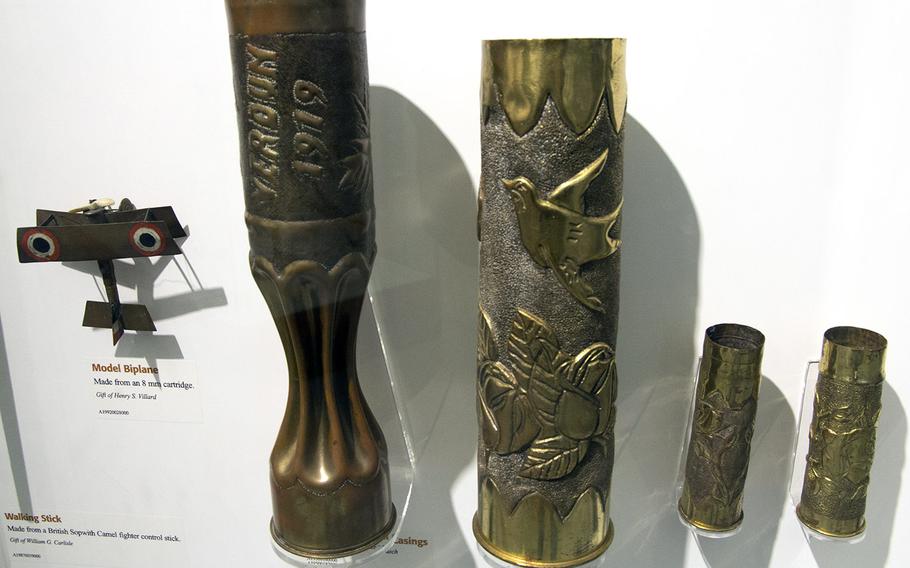
Samples of "trench art," fashioned by troops during World War I, at the National Air and Space Museum's Steven F. Udvar-Hazy Center, November, 2013. (Joe Gromelski/Stars and Stripes)
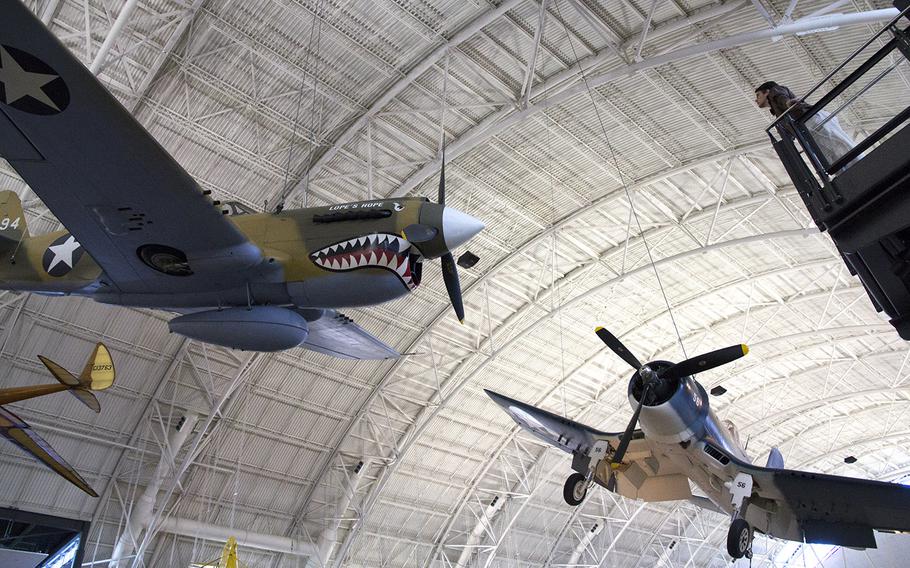
The World War II Curtiss P-40E Kittyhawk, left, and other fighter planes hang from the ceiling at the National Air and Space Museum's Steven F. Udvar-Hazy Center, November, 2013. (Joe Gromelski/Stars and Stripes)

Visitors to the National Air and Space Museum's Steven F. Udvar-Hazy Center hear about the SR-71A Blackbird, the world's fastest jet-propelled aircraft, from a tour guide.This plane flew from Los Angeles to Washington, D.C. in one hour, four minutes and 20 seconds on its last flight in 1990, averaging 2,124 miles per hour. (Joe Gromelski/Stars and Stripes)
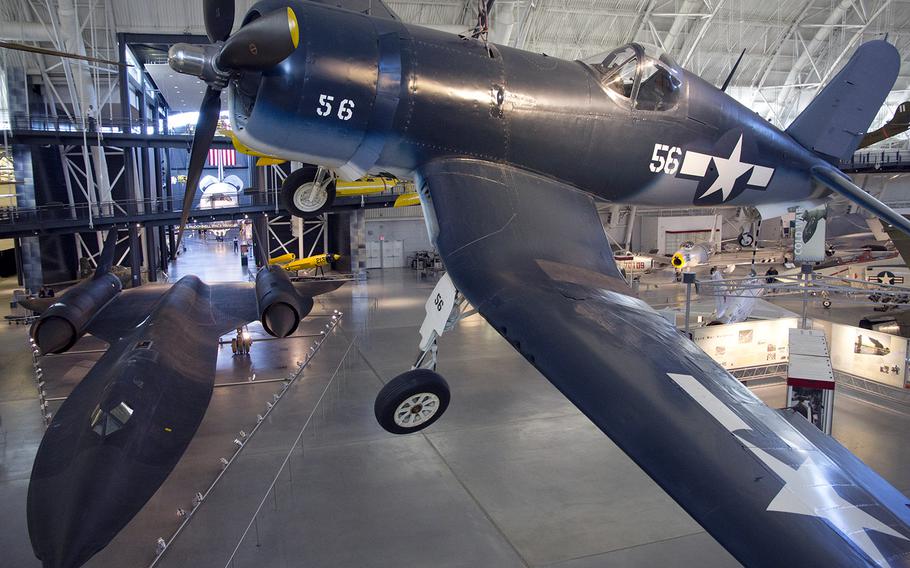
Two generations of aircraft, the Vought F4U-1D Corsair (right) and the SR-71A Blackbird, at the National Air and Space Museum's Steven F. Udvar-Hazy Center, November, 2013. (Joe Gromelski/Stars and Stripes)
While the Smithsonian Institution's Air and Space and Museum on the National Mall in Washington, D.C., contains popular artifacts ranging from the Wright Brothers' first plane to the Apollo 11 capsule, another treasure trove for aviation fans exists a few miles to the west.
The Smithsonian's Udvar-Hazy Center, opened in 2003, features such aircraft as the space shuttle Discovery, a Concorde supersonic transport, the SR-71A Blackbird that flew from Los Angeles to Washington in just over an hour, and the B-29 Superfortress "Enola Gay." Enjoy this photo tour.
Sign up to receive a daily email of today's top military news stories from Stars and Stripes and top news outlets from around the world.
